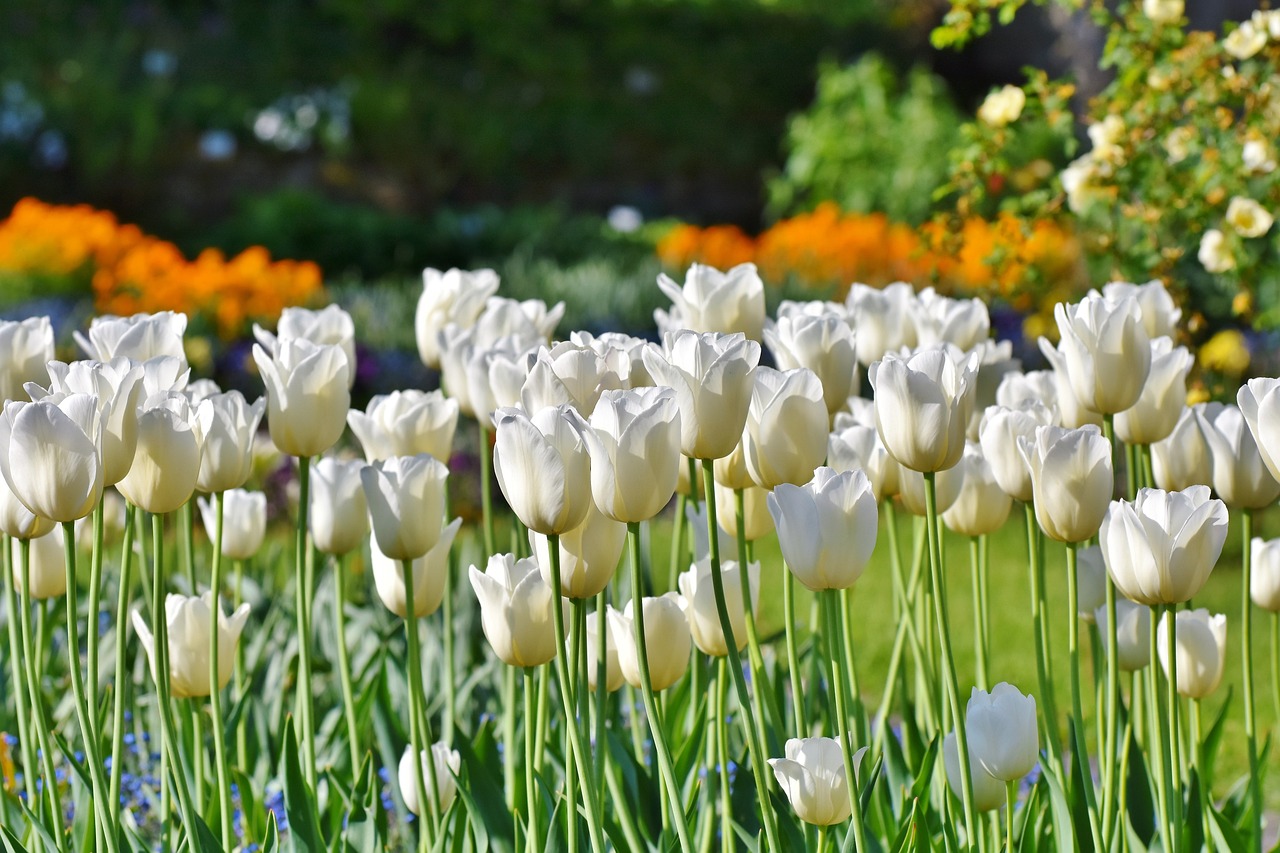Tulips are known for their vibrant and colorful blooms, but have you ever wondered what triggers them to bloom? The blooming process of tulips is influenced by various factors, both environmental and genetic. Understanding these factors can help us appreciate and care for these beautiful flowers even more.
Environmental factors are pivotal in tulip blooming. Temperature, sunlight, and soil conditions all play a role. Tulips need cold, or vernalization, to start blooming, often leading to their springtime flourish. Sunlight is crucial for flower growth. Soil quality influences nutrient and water availability, vital for blooming. Delve deeper into tulip care and factors affecting their blooms at https://flowerflood.com/, a valuable resource for flower enthusiasts.
On the other hand, genetic factors also play a significant role in determining the blooming patterns of tulips. Different tulip species have varying genetic traits and variations that influence when and how they bloom. Some tulip varieties may bloom earlier or later than others, depending on their genetic makeup. These genetic factors can also affect the size, shape, and color of the tulip flowers. Breeders and horticulturists often manipulate these genetic factors to create new and unique tulip varieties with specific blooming characteristics.
Environmental Factors
Environmental factors play a crucial role in determining the blooming process of tulips. These factors include temperature, sunlight, and soil conditions, all of which directly impact the growth and development of tulip bulbs. Understanding how these environmental factors influence tulip blooming can help gardeners and enthusiasts create optimal conditions for their tulips to thrive.
Temperature is a significant factor that affects tulip blooming. Tulips require a period of cold dormancy to initiate the blooming process. This chilling period, known as vernalization, is essential for tulip bulbs to break their dormancy and start producing flowers. The optimal temperature range for vernalization is usually between 35°F (1.7°C) and 45°F (7.2°C). If the temperature is too high or too low, it can disrupt the blooming process, resulting in delayed or stunted growth.
Sunlight is another crucial environmental factor that influences tulip blooming. Tulips are photoperiodic plants, meaning they respond to the duration of daylight. They require a certain amount of sunlight to trigger the blooming process. Typically, tulips need at least 12 to 14 hours of daylight to develop and bloom properly. Insufficient sunlight can lead to weak or deformed flowers, while excessive shade can inhibit blooming altogether.
Soil conditions also play a vital role in tulip blooming. Tulips prefer well-drained soil with a pH level between 6.0 and 7.0. Poorly drained or compacted soil can cause waterlogging, which can lead to root rot and hinder the blooming process. Additionally, the soil should be rich in organic matter and nutrients to support healthy bulb growth. Gardeners can improve soil conditions by adding compost or well-rotted manure to enhance drainage and provide necessary nutrients.
Genetic Factors
Genetic factors play a crucial role in determining the blooming patterns of tulip species. These factors refer to the specific traits and variations present in the genetic makeup of different tulip plants. Each tulip species has its own unique genetic composition, which influences the timing and characteristics of their blooming.
One important genetic factor that affects tulip blooming is the presence of specific genes that control the flowering process. These genes regulate the production of proteins and hormones that trigger the growth and development of flowers. Variations in these genes can result in variations in blooming patterns, such as early or late flowering, or the production of different colored flowers.
Furthermore, genetic traits related to the structure and physiology of tulip plants can also influence their blooming. For example, the shape and size of the petals, the arrangement of the flowers on the stem, and the overall growth habit of the plant can all be determined by genetic factors. These traits can impact the attractiveness and durability of the blooms.
It is worth noting that genetic factors interact with environmental conditions to determine the blooming patterns of tulips. While genetics provide the blueprint, factors like temperature, sunlight, and soil conditions can either enhance or hinder the expression of genetic traits. This complex interplay between genetics and the environment ultimately shapes the stunning array of tulip blooms that we admire.
Frequently Asked Questions
- Q: What are the ideal temperature conditions for tulips to bloom?A: Tulips generally bloom best when the temperature ranges between 45°F (7°C) and 60°F (15°C). However, different tulip varieties may have slightly different temperature preferences.
- Q: How much sunlight do tulips require to bloom?A: Tulips thrive in full sun, which means they need at least 6 hours of direct sunlight each day to reach their full blooming potential. Insufficient sunlight may result in weak or delayed blooming.
- Q: Can tulips bloom in any type of soil?A: Tulips prefer well-draining soil that is rich in organic matter. Sandy or loamy soils are ideal as they prevent waterlogging and allow the bulbs to establish and bloom successfully. Heavy clay soils should be amended with compost or sand to improve drainage.
- Q: Do all tulip species bloom at the same time?A: No, different tulip species and varieties have varying blooming periods. Some tulips bloom early in spring, while others may bloom later in the season. It’s important to choose tulip varieties that align with your desired blooming time.
- Q: Can I force tulips to bloom indoors?A: Yes, tulip bulbs can be forced to bloom indoors during the winter months. To do so, you’ll need to provide them with a period of cold dormancy (around 12-16 weeks) followed by a gradual exposure to warmth and light.









